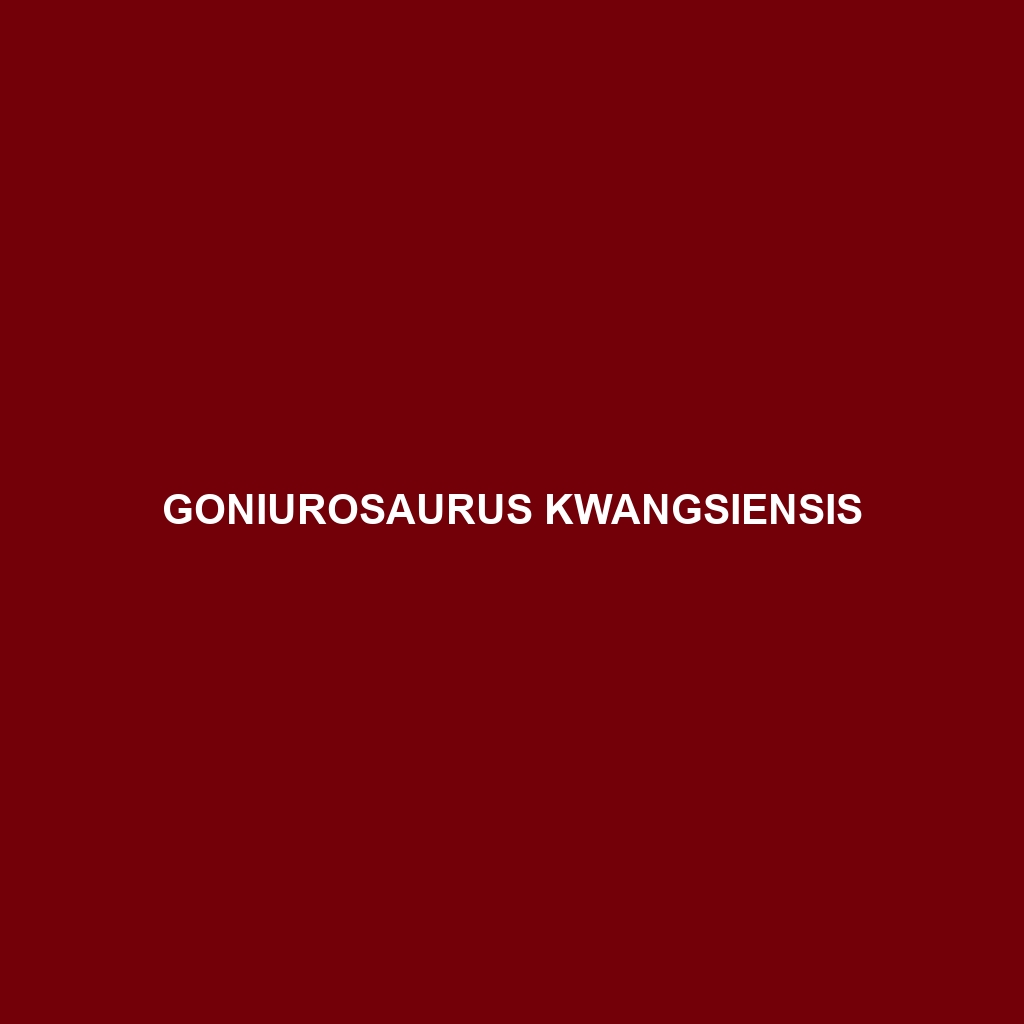Common Name
Goniurosaurus kwangsiensis
Scientific Name
Goniurosaurus kwangsiensis
Habitat
Goniurosaurus kwangsiensis, commonly known as Kwangsi gecko, primarily inhabits the subtropical and tropical regions of southern China, particularly in Guangxi province. This species is typically found in humid environments such as rainforests and moist forest edges, where vegetation is dense enough to provide shelter and hunting opportunities. The climate in these regions is characterized by warm temperatures and significant rainfall, creating ideal conditions for a variety of species to thrive. Notably, Goniurosaurus kwangsiensis is also observed in temperate forests, where its camouflage and climbing abilities help it blend into the surroundings. These geckos are mostly terrestrial but can also be found climbing trees and bushes, showcasing their adaptability to varying habitats.
Physical Characteristics
Goniurosaurus kwangsiensis is a medium-sized gecko, typically ranging from 25 to 35 cm in length. This lizard possesses a robust body, a broad head, and distinctly large eyes that enable excellent night vision, an adaptation for its nocturnal lifestyle. The coloration of Goniurosaurus kwangsiensis varies significantly but generally features a base of dark brown or gray, accented with vibrant yellow or orange spots, which serve as camouflage against the forest floor and leaves. Its skin texture is somewhat rough, adorned with small tubercles, giving it an additional layer of protection against predators. The distinctive tail is also notable; it can be used as a defense mechanism, where the gecko may shed its tail if threatened, allowing for an escape while the predator is distracted.
Behavior
The behavior of Goniurosaurus kwangsiensis is primarily nocturnal, making it most active during the night. This species exhibits territorial behavior, with males often engaging in displays of dominance through vocalizations and physical posturing. During the mating season, which usually occurs in the warmer months, elaborate courtship rituals take place, involving head bobbing and tail waving. In terms of social interactions, these geckos are generally solitary creatures, although they may be seen in close proximity to others in areas rich in food resources. Their well-developed climbing abilities allow them to escape predators quickly and seek shelter among branches and foliage.
Diet
Goniurosaurus kwangsiensis is predominantly insectivorous, feeding on a diet that includes crickets, beetles, and other small invertebrates. Its hunting strategy involves stealth and patience, where it waits for prey to come within striking distance before ambushing. The ability to blend into their environment significantly aids in both hunting and evading predators. Occasionally, Goniurosaurus kwangsiensis will consume fruits and the leaves of certain plants, demonstrating omnivorous tendencies, particularly in instances of food scarcity.
Reproduction
The reproductive cycle of Goniurosaurus kwangsiensis begins during the onset of the wet season, typically in late spring or early summer. After an elaborate mating process, the female lays one to three eggs per clutch, which are deposited in secluded, moist locations such as leaf litter or crevices. The eggs usually incubate for approximately 60 to 90 days, depending on environmental conditions. Once hatched, the young geckos are precocial, meaning they are relatively mature and mobile, allowing them to fend for themselves almost immediately. Parental care is minimal; however, females exhibit some protective behavior during nesting periods.
Conservation Status
The Goniurosaurus kwangsiensis is currently listed as “Least Concern” according to the IUCN Red List; however, habitat destruction due to deforestation and urbanization poses threats to their populations. Conservation efforts are focused on habitat preservation and raising awareness of the species’ ecological importance. Monitoring populations in protected areas is vital to ensuring their long-term survival.
Interesting Facts
One unique adaptation of Goniurosaurus kwangsiensis is its striking color pattern, which varies among individuals, providing excellent camouflage in their natural habitats. Some geckos can exhibit a change in coloration based on their environment, enhancing their concealment from predators. Additionally, their remarkable ability to regenerate lost tails serves as a fascinating subject in studies of lizard biology.
Role in Ecosystem
Goniurosaurus kwangsiensis plays a crucial role in its ecosystem as both a predator and prey. By controlling insect populations, they contribute to maintaining the ecological balance within their habitats. Moreover, as prey for larger predators, they form a vital part of the food web. Their presence indicates a healthy ecosystem, demonstrating their significance as a species within the rainforest and temperate forest communities.
